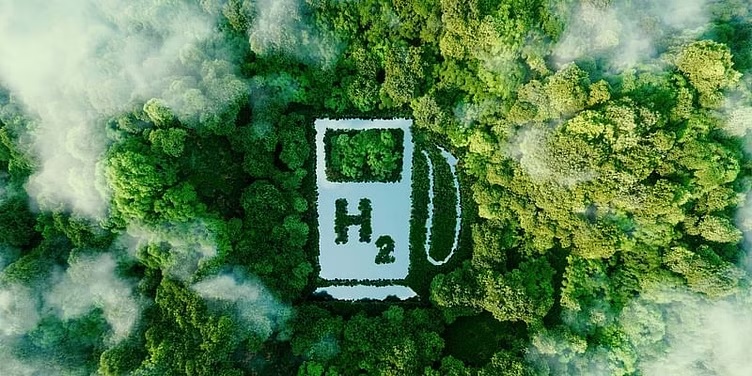
India will need ~115 GW of renewable power and ~50 bn litres of fresh water for producing ~5 mn tons GH2 by 2030.
- India is targeting to produce ~5 million tons of Green Hydrogen(GH2) by 2030.
- The EY, SED Fund report identifies ~41 shovel-ready projects in the GH2 supply chain, of which 31 are commercial and 10 are R&D projects.
- The country consumed ~5.5 million tons of gray hydrogen in the year 2018-19 mostly as feedstock for fertilizer and crude oil refining industries.
In August 2021, India announced the launch of ‘National Hydrogen Mission’ to scale up green hydrogen production and align India’s energy transition efforts with global best practices in technology, policy and regulation. The Mission aims to support the government’s efforts in meeting climate targets and making India a green hydrogen hub. The target for green hydrogen production is ~5 million tonnes by 2030 under this mission. In February 2022, the Ministry of Power (MoP), the Government of India, notified the ‘Green Hydrogen Policy’ as the first leg of policy instruments to further bolster efforts in this direction.
Most efficient alkaline electrolyzers today consume ~50 kWh of electricity and 10 liters of fresh water to produce 1 kg of hydrogen. Therefore, if all the ~5 million tons of green hydrogen production target by 2030 were to be achieved via alkaline electrolysis, India would require ~50 billion liters of fresh water and 250 billion kWh of electricity supply from renewable sources of energy, primarily wind and solar PV. This translates to ~115 GW of installed renewable power generation capacity @ 25% CUF (for hybrid round-the -clock supply). To get a sense of this scale, the current all India installed capacity of renewable power generation is ~106 GW as of Feb 20221.
India’s green hydrogen market is currently in the nascent stages of development. The supply chain for green hydrogen needs sufficient economies of scale and innovation to achieve competitiveness through 2030. More importantly, robust, and predictable demand for green hydrogen through 2030 is fundamental for accelerating investments to expand the supply chain. By leveraging low–cost domestic renewable electricity produced at scale, India could become a regional hub for exporting green hydrogen at competitive prices and command a reasonable share in the global hydrogen demand of 200 million tonnes2 by 2030.
The supply chain of GH2 is complex, like any other fossil fuel commodity, and includes production from renewable energy sources, storage, transportation, distribution, and handling. Beyond this, the physical properties of hydrogen warrant additional infrastructure for safe handling and operations. Many potential end–use applications may need technology and infrastructure to support energy transformations such as H2 to electricity and vice versa, H2 to ammonia, H2 to methanol etc. GH2 production, storage, and supply needs to meet the purity, pressure, and volume requirements of specific industries and applications.
Tipping points for cost competitiveness of green hydrogen
India’s thriving renewable energy markets and enabling policy ecosystem have helped the country retain its position among the top three markets globally in the EYs ‘Renewable Energy Country attractiveness Index’ (RECAI). By leveraging low-cost intermittent renewable electricity produced at scale, India could become a global hub for production and export of green hydrogen based commodities.
- Grey H2 production costs (steam methane reforming) vary from 75 to 150 INR/kg depending onthe price of natural gas.
- The domestic retail CNG / PNG prices vary from approx. 40 to 90 INR/kg, which translates to approx. 1-2 INR/MJ of energy considering the lower heating value of this fossil fuel commodity.
- Achieving parity with these commodity prices will determine the speed and scale of GH2 adoption. This requires boosting demand for GH2 in a manner that helps achieve economies of scale across the supply chain, indigenization of supply chain and technology improvement to enhance efficiencies of GH2 production and transformations with earth abundant raw materials. R&D investments and programs are crucial for technology indigenization across the supply chain.
- Government intervention and pilot projects must also address and demonstrate the cost effectiveness of GH2 storage and delivery systems.
- The cost of utility scale intermittent renewable power generation has been declining over the last decade, settling between INR 2 to 3.0 / kWh in the present scenario. This cost does NOT include transmission, wheeling, banking, and other charges specific to local state regulations. Moreover, this declining trend is expected to reverse in the immediate future, driven by a global spike in commodity prices, import duties and domestic policy commitments to boost adoption of locally manufactured PV cells, modules, etc.
Policy interventions to accelerate the GH2 economy
The recently announced ‘Green Hydrogen Policy’ is a timely intervention for the industry betting on the promise of green hydrogen/ammonia production at competitive prices. The policy will kick start India’s energy transition efforts, particularly in the emission intensive industrial sectors such as oil refineries, fertilizers, metals, chemicals, and cement.
The EY–SED Fund report recommends certain key sub-national policy interventions to accelerate the GH2 economy:
- Reduce the cost of renewable power generation and supply for GH2 production
- Improve ease of doing renewable energy open access transactions
- Implement Geographic Information System (GIS) mapping and identification of GH2 clusters for development
- Establish a state-level mission to advance the GH2 economy and formulate and adopt GH2 production targets separately for industries, transportation, and other sectors
- Establish a single-window portal for all statutory clearances and permissions required for manufacture, transportation, storage, and distribution of GH2/ammonia
Have production-linked incentive (PLI) schemes and fiscal benefits for high-efficiency and durable electrolyzer systems - Enhance public funding support toward R&D programs and call for a demonstration of projects that support the competitiveness of the GH2 supply chain and end-use
















